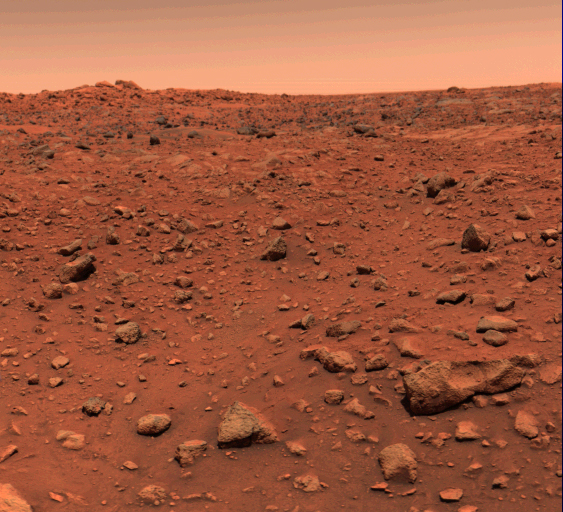
On August 20, 1975, NASA’s Viking 1 Orbiter and Lander launched from Cape Canaveral, Florida. Eleven months and half a billion miles later the Viking 1 lander touched down on Mars and sent home the first picture ever taken on the Martian surface. It would be just one of more than 16,000 more taken of the Red Planet by the Viking project.
But why photograph the lander’s foot, when the whole Martian landscape was waiting? For science—which is the reason NASA does almost anything at all. “We wanted to understand what the bearing strength of that surface was. We wanted to understand how the surface would respond to the footpad,” John Newcomb, a member of the Viking management team, said.
The image they got revealed a lot—the depth of the impression the foot pad made, the granularity of the soil, even some clues to its composition. “We couldn’t have asked for anything better,” said James Martin, the project’s leader, “That picture was really worth a thousand words.”

There were actually two Viking probes—Viking 2 launched and landed a month after its sibling. Together, the two landers and two orbiters sent the first high resolution images of Mars back to Earth (mapping 97% of the surface), revealing the structure and composition of the planet’s atmosphere and landscape, and conducting biological tests to search for evidence of extraterrestrial life. While they were only designed to work for 90 days, the spacecraft lived on for more than six years, collecting data and sending it back to us all the while.

Now, 40 years later, NASA is continuing the work begun by the Vikings in their journeys to Mars. Since the old spacecraft flew, Mars has been visited by many other spacecraft, including the Sojourner, Spirit, Opportunity and Curiosity rovers. If we actually do manage to send humans to Mars in 2030, as NASA hopes to, a pair of old Vikings will be there waiting for them.
More Must-Reads From TIME
- The 100 Most Influential People of 2024
- The Revolution of Yulia Navalnaya
- 6 Compliments That Land Every Time
- What's the Deal With the Bitcoin Halving?
- If You're Dating Right Now , You're Brave: Column
- The AI That Could Heal a Divided Internet
- Fallout Is a Brilliant Model for the Future of Video Game Adaptations
- Want Weekly Recs on What to Watch, Read, and More? Sign Up for Worth Your Time
Contact us at letters@time.com